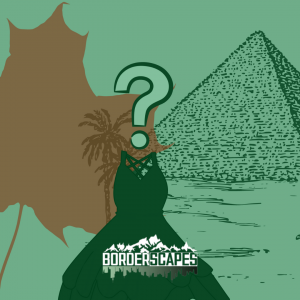Two Sides of Identity
Mariam Abdel-Akher

All people belong to a border – a nationality, a citizenship, an identity. The process of being contained with a likeminded community impacts us all, on a local and national level. However, there are moments where borders feel invisible, that one belongs to no borders at well.
Those who hold a second-generation identity, namely those who hold citizenships in both an Eastern and Western context, often find themselves torn between home and… home. The process of belonging is often tainted by clashing cultural values and skin color, causing a disconnect from feeling fully a part of either nationality. So, what does it mean for those who live in these circumstances of feeling culturally disassociated – to feel isolated from a border within a border - and the fragility of their mental health?
Join me as I discuss my own transitions through life discovering continuous identity crisis as a BIPOC woman growing up in Ottawa, Canada and how that has impacted identity trauma within my day-to-day experiences. With commentary from expert Maya Phansalker, a psychotherapist working with many second-generation people, and Salma Tihani, a Canadian Moroccan woman living in Montreal, Canada and one of my childhood best friends. Listen as we embark on a journey of solutions, healing, and science; looking into the struggle of holding a second-generation identity.
Extra Credits and Episode Information
Songs by Poddington Bear: Love Song #1 (0:00)
Theme music is produced by Helena McCormack.
Illustration created by Mariam Abdel-Akher.
All copyrights reserved – ‘Two Sides of Identity’, part of the series Borderscapes.
The full article “Mental health problems of second generation children and adolescents with migration background” in the International Journal of Psychiatry in Clinical Practice can be found here.
To find out more about second-generation identity, consider listening to How to Second Gen and The Second Generation.
